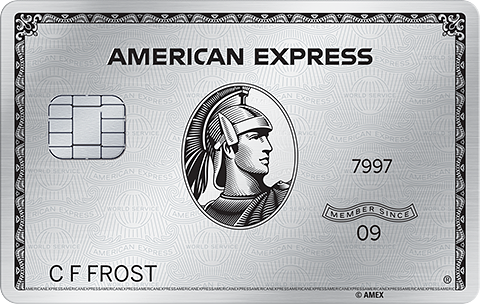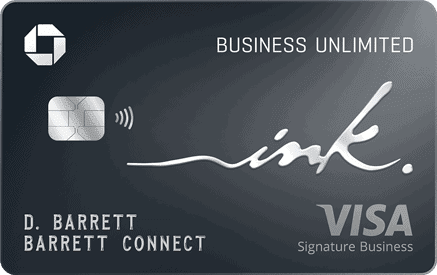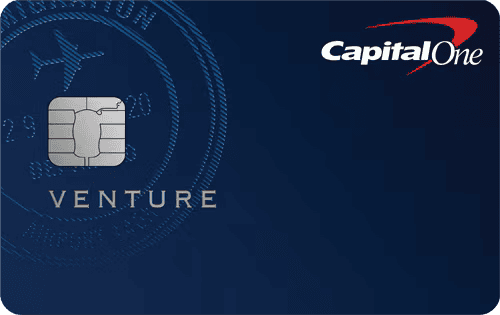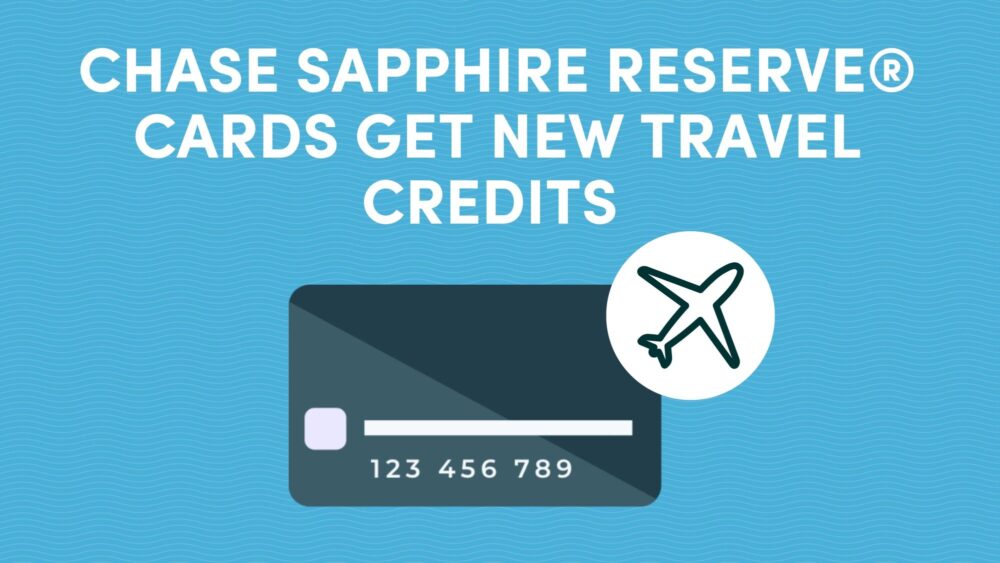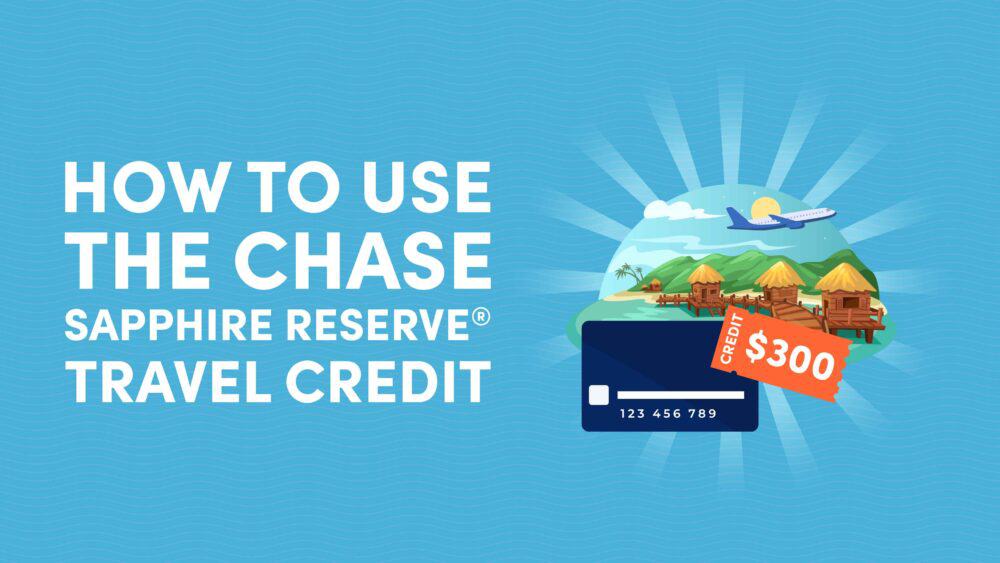
10xTravel is part of an affiliate sales network and receives compensation for sending traffic to partner sites, such as CreditCards.com. This site may earn compensation when a customer clicks on a link, when an application is approved, or when an account is opened. This compensation may impact how and where links appear on this site. This site does not include all financial companies or all available financial offers. Terms apply to American Express benefits and offers. Enrollment may be required for select American Express benefits and offers. Visit americanexpress.com to learn more. All values of Membership Rewards are assigned based on the assumption, experience and opinions of the 10xTravel team and represent an estimate and not an actual value of points. Estimated value is not a fixed value and may not be the typical value enjoyed by card members.
With Chase’s recent revamp of its flagship premium travel rewards card—the Chase Sapphire Reserve®—many of us are (rightfully) asking whether it’s still worth its annual fee of $795.
As with any question regarding card selection, the answer is simple—it depends. Specifically, it depends on the degree to which you can use the card’s benefits to your advantage and how much you could offset the annual fee through the card’s perks and earning rates.
In this Chase Sapphire Reserve credit card review, we’re looking at what the revamped Sapphire Reserve has to offer its cardholders and see if it’s worth a spot in your wallet.
What Makes the Chase Sapphire Reserve Stand Out?
The Chase Sapphire Reserve has one of the highest annual fees of any premium travel rewards card. It outpaces American Express Platinum Card® by $100 (see rates and fees) and makes the Capital One Venture X Rewards Credit Card’s $395 annual fee look small in comparison.
Earn 125,000
bonus points
after you spend $6,000 on purchases in the first 3 months from account opening.
Annual Fee: $795
American Express Platinum Card®
You may be eligible for as high as 175,000
Membership Rewards® Points
after you spend $8,000 in eligible purchases on your new Card in your first 6 months of Card Membership. Welcome offers vary and you may not be eligible for an offer. Apply to know if you’re approved and find out your exact welcome offer amount – all with no credit score impact. If you’re approved and choose to accept the Card, your score may be impacted.
Annual Fee:
$895
However, with the Chase Sapphire Reserve refresh, it now offers more than $2,700 worth of annual cardholder perks—not to mention solid earning rates, a lucrative welcome offer, luxury travel perks and the most comprehensive suite of travel insurance perks offered by any card.
Let’s check out the card’s key benefits and what you can do with Ultimate Rewards points.
Key Benefits at A Glance
There’s no doubt that the Chase Sapphire Reserve is a heavyweight contender in the luxury travel rewards card market.
As a Sapphire Reserve cardholder, you’ll earn the following rates on bonus spending categories:
- 10X points per dollar spent on Peloton equipment and accessory purchases of $150 or more in the United States on up to $5,000 in total purchases (through Dec. 31, 2027)
- 8X points per dollar spent on all purchases made through Chase Travel℠ including purchases with The Edit℠ (after the first $300 is spent on travel purchases)
- 5X points per dollar spent on purchases with Lyft (through Sep. 30, 2027)
- 4X points per dollar spent on flights booked directly with the airline and on hotels booked directly with the hotel (after the first $300 is spent on travel purchases)
- 3X points per dollar spent on dining purchases worldwide, including takeout and eligible delivery services
- 1X points per dollar spent on all other purchases
Additionally, you’ll enjoy a number of travel-related perks and statement credits, including the following:
- $300 annual travel statement credit
- $500 annual statement credit for stays with The Edit℠ issued in semi-annual
- $250 increments (minimum stay of two nights required). Plus, you’ll receive a $100 property credit, daily breakfast for two, room upgrades and more (subject to availability).
- Statement credit every four years toward Global Entry, TSA PreCheck® or Nexus membership application fees
- Complimentary IHG® One Rewards Platinum Elite Status (through Dec. 31, 2027)
- Complimentary Priority Pass Select membership
And if that wasn’t enough, you’ll also enjoy more than $1,500 worth of lifestyle-related statement credits, including:
- $300 annual statement credit for dining purchases made with eligible restaurants belonging to the Sapphire Reserve Exclusive Tables program (issued in semi-annual $150 credits)
- $250 annual statement credit toward Apple TV+ and Apple Music subscriptions (through June 22, 2027)
- Complimentary DashPass membership worth $120 offering reduced service fees and $0 delivery fees on eligible orders when activated by Dec. 31, 2027. Enrolled members will also receive up to $300 in DoorDash credits per year, including a $5 monthly promo to spend on restaurant orders and two $10 promos each month to save on non-restaurant orders.
- $300 annual statement credit for StubHub and Viagogo purchases, issued in semi-annual $150 credits (activation required)
- $120 in annual Lyft credits, issued in $10 monthly increments (through Sept. 30, 2027)
- $120 in annual Peloton credits, issued in $10 monthly increments toward eligible memberships (through Dec. 31, 2027). Eligible memberships include Peloton All-Access Membership, Rental, App+, Guide, App One or Strength+ memberships purchased by you or an authorized user using your Chase Sapphire Reserve card.
The benefits don’t stop there.
If you manage to charge $75,000 to your card within a calendar year, you’ll unlock the following exclusive Chase Sapphire Reserve bonus cardholder perks:
- Complimentary IHG One Rewards Diamond Elite status for the remainder of the calendar year plus the following year
- $250 credit for The Shops at Chase
- $500 Southwest Airlines Chase Travel℠ credit
- Complimentary Southwest Airlines A-list status for the remainder of the calendar year plus the following year
If you can maximize the Sapphire Reserve’s benefits, you can offset its annual fee by more than triple. However, whether you manage to do this or not depends on how the card’s benefits fit into your existing travel goals and spending habits.

Ultimate Rewards Program Overview
The Chase Ultimate Rewards program is one of the most lucrative rewards programs out there. And by holding the Chase Sapphire Reserve card, you get to earn a valuable rewards currency that you can redeem in a number of ways, be it for lie-flat business-class flights across the world or luxurious beachfront hotel stays.
Chase boasts 14 airline and hotel partners across all three airline alliances, with some valuable programs such as United MileagePlus, Air France-KLM Flying Blue, Air Canada Aeroplan, Singapore KrisFlyer and Virgin Atlantic Flying Club.
Alternatively, you can redeem your points through Chase Travel℠ for flights, hotel stays, excursions and other travel bookings for values between 1 and 2 cents per point.
You also can redeem your points as a statement credit, gift card or use them for Amazon, Apple and PayPal purchases. However, these options provide the least value for your points, so you’re better off transferring them to partners or redeeming them through Chase Travel℠.
Another great aspect of the Chase Ultimate Rewards program is the ability to combine your points across your own cards and those from members in your household.
This makes it easy to utilize the various benefits and earning rates offered on different Chase cards and redeem these earnings through your Sapphire Reserve account, which offers access to all of Chase’s transfer partners as well as better redemption rates through Chase Travel℠.
Breaking Down the Sapphire Reserve’s Reward Structure
Let’s now turn to the card’s earning structure and see exactly how many points you could be earning, what you can do with them and how the card’s bonus categories compare with other premium cards.
Points Earning Categories
The Chase Sapphire Reserve offers impressive earning rates on a number of bonus spending categories. You’ll earn bonus points on every dollar spent in the following categories:
- 10X points per dollar spent on Peloton equipment and accessory purchases of $150 or more in the United States, on up to $5,000 in total purchases (through Dec. 31, 2027)
- 8X points per dollar spent on all purchases made through Chase Travel℠ including purchases with The Edit℠ (after the first $300 is spent on travel purchases)
- 5X points per dollar spent on purchases with Lyft (through Sep. 30, 2027)
- 4X points per dollar spent on flights booked directly with the airline and on hotels booked directly with the hotel (after the first $300 is spent on travel purchases)
- 3X points per dollar spent on dining purchases worldwide, including takeout and eligible delivery services
- 1X points per dollar spent on all other purchases
The ability to earn 8X points on every dollar spent through Chase Travel℠ offers a lucrative way to rack up points on cash bookings. For instance, an $800 flight booked through Chase Travel℠ would earn you 6,400 points, worth around $128 when redeemed through Chase Travel℠ using a Points Boost offer or more when transferred to partners.
The card also earns a strong return of 3X points on dining expenditure worldwide, including takeout and eligible delivery services, allowing you to continue earning points on dining purchases abroad. Considering that the average American spends around $3,933 annually on dining out, that expenditure would earn 11,799 Ultimate Rewards points when charged to the Sapphire Reserve, worth approximately $235 when redeemed through Chase Travel℠ using a Points Boost offer.
Unfortunately, although the card continues to offer elevated earning rates on flight and hotel purchases, it no longer offers 3X points on general travel expenditure—one of the Sapphire Reserve’s previously most lucrative (and generous) bonus spending categories, given Chase’s broad definition of travel purchases.
The Sapphire Reserve’s baseline rewards rate is also on the weaker end, compared to competitor cards such as the Capital One Venture X Rewards Credit Card that offers 2X Venture Miles per dollar spent on non-bonus category spending. However, you can make up for this by using the Chase Freedom Unlimited® card to earn 1.5X points on non-bonus spending and then transfer these earnings to your Sapphire Reserve account.
Alternatively, if you prefer to make your cash bookings directly with the hotel or airline, you’ll earn 4X points per dollar spent when using the Sapphire Reserve card.
Point Values and Redemption Options
Chase Ultimate Rewards points are one of the most valuable rewards currencies you can earn.
You can transfer your points to any of Chase’s 14 airline and hotel partners, including airlines across all three major alliances. This redemption option offers the biggest bang for your buck in terms of cent-per-point value.
Alternatively, you can redeem your points through Chase Travel℠ for 1 to 2 cents per point.
Previously, Sapphire Reserve cardholders could redeem their points for 1.5 cents apiece through Chase Travel℠ regardless of the airline or hotel booked. This option has been scrapped following the Sapphire Reserve’s revamp, and cardholders now have access to Chase’s Points Boost feature.
The Points Boost feature offers Sapphire Reserve cardholders the ability to redeem their points for up to 2 cents apiece toward premium airfare with eligible airlines and on hotel stays with The Edit℠. For all other Chase Travel℠ bookings that fall outside of these categories, your points will be worth 1 cent apiece.
Keep in mind that if you held or were approved for the Chase Sapphire Reserve prior to June 23, 2025, you’ll continue to be able to redeem points earned prior to Oct. 26, 2025, at the previous rate of 1.5 cents apiece until Oct. 26, 2027. Thereafter, you’ll be subject to the rates offered through Points Boost for Chase Travel℠ redemptions.
For cardholders who were approved for the card after June 23, 2025, you’ll be subject to the rates offered through Points Boost effective immediately.
If you tend to book business- and first-class tickets, or if you can’t find any award availability, redeeming your Ultimate Rewards points for up to 2 cents apiece through Chase Travel℠ is a solid way to use them. And because portal bookings are treated like cash bookings, you’ll also earn miles on your flight with the respective frequent-flyer program—a win-win.
However, if you prefer to book economy tickets through Chase Travel℠, or if you can’t find any airlines that offer Points Boost rates, you’ll struggle to squeeze value out of your points.
Currently, United Airlines, Air Canada, Emirates, Eva Air, Qantas and LATAM offer the greatest number of Points Boost redemption opportunities. Nevertheless, data points suggest that availability for lucrative Points Boost redemptions are scarce, so in most cases, you’ll likely be better off sticking to transfer partner redemptions.
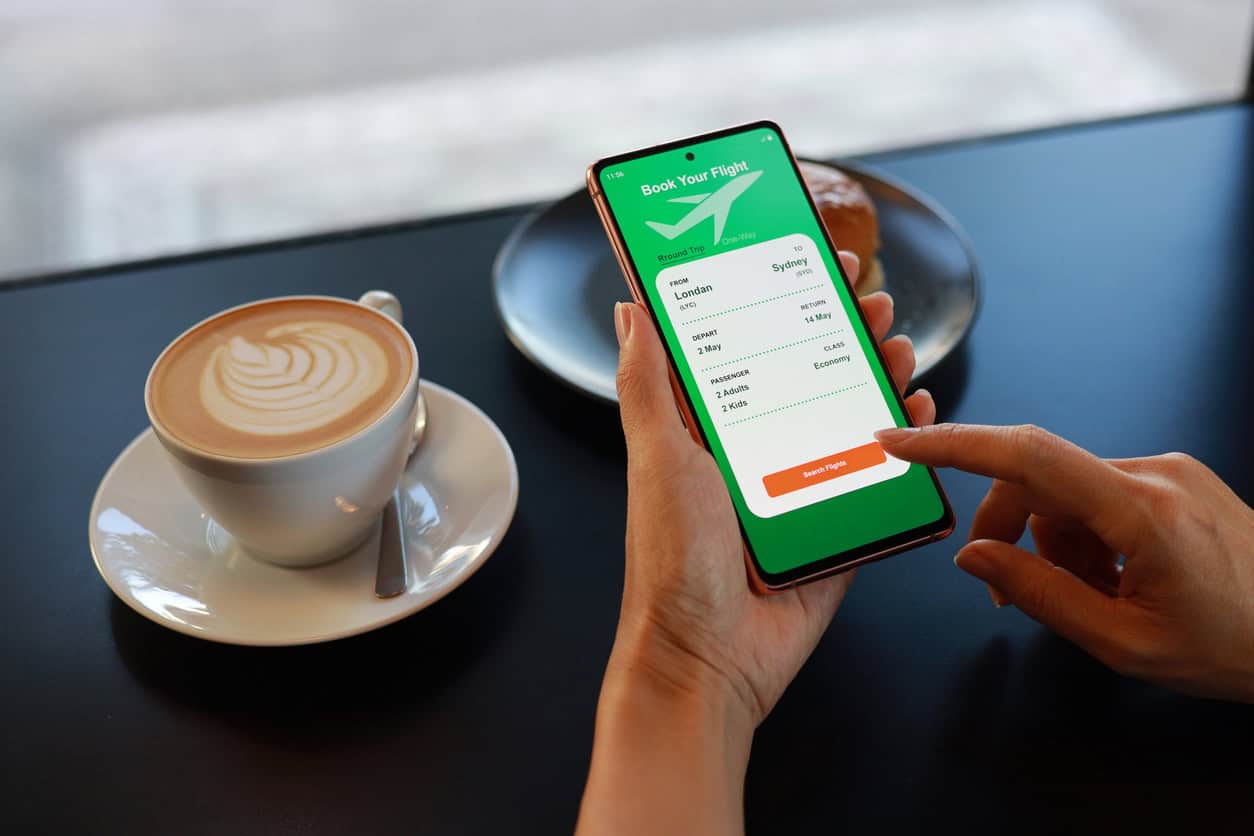
Transfer Partner Opportunities
As previously mentioned, Chase boasts 14 airline and hotel partners you can transfer your Ultimate Rewards to, including the following rewards programs:
| Aer Lingus AerClub | Marriott Bonvoy |
| Air Canada Aeroplan | Singapore Airlines KrisFlyer |
| Air France-KLM Flying Blue | Southwest Airlines Rapid Rewards |
| British Airways Club | United Airlines MileagePlus |
| Club Iberia Plus | Virgin Atlantic Flying Club |
| Emirates Skywards | World of Hyatt |
| IHG One Rewards | |
| JetBlue TrueBlue |
What’s more is that you can transfer your points to these respective programs at a 1:1 ratio, ensuring that your Ultimate Rewards retain their value.
While there are numerous ways you can redeem your points with Chase’s transfer partners, some of the most lucrative include:
- Fly All Nippon Airways (ANA) first class from the West Coast to Tokyo for 145,000 points round trip or from the East Coast for 170,000 points round trip through Virgin Atlantic.
- Fly Virgin Atlantic Upper Class for 29,000 points each way or economy class for 6,000 points each way between the East Coast and United Kingdom.
- Leverage World of Hyatt’s competitive off-peak award chart pricing to stay in luxury properties across the globe, such as Park Hyatt properties.
- Take advantage of Flying Blue Promo Rewards and Air France and KLM’s expansive network for cheap award flights to Europe, Africa and Asia.
- Book Star Alliance premium-cabin award fares such as Swiss, Lufthansa, Turkish and United Polaris business through Aeroplan at competitive rates.
- Fly with Southwest Airlines and JetBlue Airways for dirt-cheap award rates across the U.S.
- Fly off-peak business class with Aer Lingus nonstop to Ireland for 50,000 to 62,500 Avios each way.
This list isn’t exhaustive, but it does cover some of the best ways you can leverage your Ultimate Rewards points earned with the Chase Sapphire Reserve to travel the world in style.
Is the Chase Sapphire Reserve Annual Fee Worth It?
While the Sapphire Reserve boasts a hefty annual fee, it more than balances this out with perks and strong earning rates. Here’s a cost-benefit Chase Sapphire Reserve review.
Annual Fee Breakdown
The Chase Sapphire Reserve sure isn’t cheap. In fact, it’s got one of the highest annual fees on the market.
Coming in at $795 per year, the Sapphire Reserve is $100 more expensive than American Express Platinum Card® (see rates and fees) and a whopping $400 pricier than the Capital One Venture X Rewards Credit Card.
Earn 125,000
bonus points
after you spend $6,000 on purchases in the first 3 months from account opening.
Annual Fee: $795
Suffice to say, you need to ensure that you can maximize the Sapphire Reserve’s annual credits and cardholder perks to offset its annual fee.
Given that the card offers more than $2,700 worth of annual credits and cardholder perks, it’s definitely possible to offset the annual fee—by more than threefold.
However, the degree to which you’ll be able to offset the Sapphire Reserve’s annual fee depends entirely on whether you can maximize the card’s perks—in other words, whether they fit into your existing lifestyle, spending and travel habits.
Let’s check these perks out and see how to maximize them to offset the card’s annual fee.
Value of Travel Credits
When deciding whether it’s worth paying a card’s annual fee, it’s essential to consider the monetary value of the card’s credits and perks. Luckily, the Chase Sapphire Reserve offers a number of travel credits that help offset its annual fee, including:
- $300 annual travel statement credit
- $500 annual statement credit for stays with The Edit℠ issued in semi-annual $250 increments (minimum stay of two nights required)
- Statement credit every four years toward Global Entry, TSA PreCheck® or Nexus membership application fees.
Among the most valuable credits is the $300 annual travel statement credit—the most generous and flexible of any credit card. This credit is easy to use given Chase’s wide definition of travel, which includes the following merchants:
| Airlines | Hotels |
| Buses | Limousines |
| Campgrounds and operators of passenger trains | Motels |
| Car rental agencies | Parking lots and garages |
| Cruise lines | Taxis |
| Discount travel sites | Timeshares |
| Ferries | Toll bridges and highways |
| Travel agencies |
Similarly, unlike other travel credits offered by premium credit cards, the Chase Sapphire Reserve’s travel credit isn’t tied to purchases made through Chase Travel℠, making it easier to use.
The $500 annual statement credit for stays with The Edit℠ (issued in $250 semi-annual increments) is another fairly easy-to-use credit for the frequent traveler, requiring two hotel stays of a minimum of two nights each—one between January and June, and the second between July and December.
If you were able to use these two travel credits every year, you’d offset the Sapphire Reserve’s annual fee without having to use any of its other benefits.
Additionally, the ability to get your application fee for Global Entry, TSA PreCheck or Nexus membership reimbursed every four years is another solid benefit.
Value of Lifestyle Credits
In addition to travel credits, the Sapphire Reserve boasts a number of lifestyle-related credits that help to further offset its annual fee. These include:
- $300 annual statement credit for dining purchases made with eligible restaurants belonging to the Sapphire Reserve Exclusive Tables program (issued in semi-annual $150 credits)
- $250 annual statement credit toward Apple TV+ and Apple Music subscriptions (through June 22, 2027)
- Complimentary DashPass membership worth $120. Enrolled members will also receive up to $300 in DoorDash credits per year, including a $5 monthly promo to spend on restaurant orders and two $10 promos each month to save on non-restaurant orders.
- $300 annual statement credit for StubHub and Viagogo purchases, issued in semi-annual $150 credits (activation required)
- $120 in annual Lyft credits, issued in $10 monthly increments (through Sept. 30, 2027)
- $120 in annual Peloton credits, issued in $10 monthly increments toward eligible memberships (through Dec. 31, 2027). Eligible memberships include Peloton All-Access Membership, Rental, App+, Guide, App One or Strength+ memberships purchased by you or an authorized user using your Chase Sapphire Reserve card.
Depending on your individual lifestyle, some of these credits will be easier to use than others.
For example, most people will be able to benefit from a DashPass membership. Depending on how often you use DoorDash, it may also be easy enough to maximize the $300 worth of DoorDash credits issued in $5 monthly promos on restaurant orders and two $10 monthly promos for non-restaurant orders.
If you can take one Lyft ride per month worth at least $10, you’ll be able to maximize the $120 credit easily.
Apple TV+ and Apple Music users will find it easy to maximize the $250 annual credit toward these subscriptions, and those who enjoy fine dining will also be able to take advantage of the $300 credit for dining purchases made with eligible restaurants belonging to the Sapphire Reserve Exclusive Tables program.
However, if you’re not an Apple Music or Apple TV+ user, nor interested in spending your money on dining experiences, these credits don’t provide much benefit.
Similarly, if you’re not a concertgoer, the $300 statement credit for StubHub and Viagogo purchases won’t be of much use to you. And if you’re not interested in Peloton memberships, the $120 credit isn’t useful to you, either.
Nevertheless, the average cardholder can probably squeeze at least $540 to $1,090 worth of value out of these lifestyle credits (if not more), making it relatively easy to offset the card’s annual fee.
As always, the card benefits need to match your lifestyle—if you have to make unnecessary purchases or start subscriptions solely to maximize the card’s credits, it’s likely the wrong card for you.
Premium Travel Benefits Worth
In addition to the card’s lifestyle and travel credits, the Sapphire Reserve offers an impressive suite of premium travel perks.
As a cardholder, you’ll enjoy complimentary Priority Pass membership, including access to Chase Sapphire Lounges by The Club, and complimentary IHG One Rewards Platinum Elite status (through Dec. 31, 2027).
A standard Priority Pass membership would cost you $469, effectively cutting the Sapphire Reserve’s annual fee in half assuming you would use this perk. Priority Pass membership opens up more than 1,300 airport lounges globally to you and up to two guests.
You’ll also enjoy access to the exclusive Chase Sapphire Lounge by The Club—a growing network of luxurious cardholder lounges. You can bring up to two guests with you free of charge into these lounges.
Similarly, primary cardmembers and authorized users receive complimentary access for themselves and up to one guest each to Air Canada’s network of Maple Leaf Lounges as well as Air Canada Cafés across participating locations in Canada, the U.S. and Europe. To gain access, you’ll need to be flying on a Star Alliance member airline flight.
Keep in mind that Air Canada Signature Suites and lounges located in Montréal-Pierre Elliott Trudeau International Airport (YUL) are excluded. Additional guests are allowed for a fee.
These lounge access perks alone make the Sapphire Reserve a valuable asset for the frequent traveler, guaranteeing more time spent loading up on freebies and glasses of bubbly in the lounge and less time spent in the security line (thanks to the Global Entry membership statement credit).

Additionally, the inclusion of complimentary IHG One Rewards Platinum Elite status offers significant perks for the frequent traveler that will make your hotel stays more luxurious and enjoyable. In addition to all the benefits of Silver Elite and Gold Elite status, Platinum Elite members enjoy the following perks:
- 60% bonus earnings on top of base points
- Complimentary upgrades (subject to availability)
- Welcome amenity at check-in
- Complimentary Hertz Five Star® status
- Guaranteed room availability when you book 72-hours in advance (blackout dates apply)
- Early check-in (subject to availability)
- Late checkout (subject to availability)
- Reward night discounts
You’d typically need to stay for 40 nights at IHG properties within a qualification year or earn 60,000 Qualified Points to receive IHG Platinum Elite status, making this a solid benefit with a significant equivalent monetary value.
Likewise, if you manage to charge $75,000 to your card within a calendar year, you’ll be bumped up to complimentary IHG Diamond Elite status, unlocking the following perks:
- 100% bonus earnings on top of base points
- Welcome amenity upon check-in, including daily breakfast for two
- Hertz President’s Circle® status
- Dedicated Diamond Elite support line
Those who charge $75,000 to their card within a calendar year will also receive complimentary Southwest Airlines A-list status for the remainder of the calendar year plus the following year. This unlocks a number of benefits for Southwest flyers, including:
- Ability to select Preferred or Standard seats at the time of booking or an Extra Legroom seat within 48 hours of departure at no additional cost (applies to flights departing on or after Jan. 27, 2026)
- Priority boarding
- First checked bag free, second checked bag for $35
- 25% Rapid Rewards earning bonus on flights
- Priority lane and express lane for check-in and security processing
- Same-day standby privileges
If you tend to put $75,000 or more in spending on your card every year, these are solid additional benefits you’ll be able to maximize.
Travel Protection Perks
The Chase Sapphire Reserve comes with the most comprehensive set of travel protection perks of any card on the market.
As a Sapphire Reserve cardholder, you can rest assured that you’re protected while travelling with the help of the following benefits:
- Auto rental coverage. Primary coverage of up to $75,000 for theft and collision damage for most rental vehicles in the U.S. and abroad, when you decline the rental company’s collision damage waiver and charge the entire cost to your Sapphire Reserve card. For New York state residents, this auto rental coverage is secondary to your primary automobile insurance plan when in the U.S.
- Baggage delay insurance. Provides reimbursement of up to $100 per day for up to five days for essential purchases, such as toiletries and clothing, when your baggage is delayed for more than six hours.
- Emergency evacuation and transportation insurance. If you or a covered traveler are injured or become sick during a trip that is 100 miles or further away from your home that results in an emergency evacuation, you can be covered for medical services and transportation up to $100,000.
- Emergency medical and dental benefit. If you or an immediate family member become sick or injured while you’re 100 miles or farther away from home during a trip, you can be reimbursed up to $2,500 for medical expenses (subject to a $50 deductible).
- Lost luggage reimbursement. Provides reimbursement of up to $3,000 per covered traveler for the cost to repair or replace checked or carry-on baggage that is lost, damaged or stolen during a covered trip. New York state residents are limited to reimbursement of $2,000 per bag and $10,000 for all covered travelers per trip.
- Travel accident insurance. When you charge your common carrier fare to your Sapphire Reserve card, you’re eligible to receive up to $1 million in the event of accidental death or dismemberment.
- Trip cancellation and interruption insurance. If your trip is canceled or cut short due to sickness, inclement weather or another covered situation, you’ll be reimbursed for up to $10,000 per covered traveler and $20,000 per trip for your pre-paid, nonrefundable travel expenses, including passenger fares, tours and hotels.
- Trip delay reimbursement. If your common carrier travel is delayed for more than six hours or requires an overnight stay, you’re covered for unreimbursed expenses, such as meals and lodging, up to $500 per covered traveler.
These benefits can save you hundreds—if not thousands—of dollars when things go south. In many cases, they can also prevent you from having to take out a separate travel insurance plan, saving you even more money on each trip.
If you travel a lot, the Chase Sapphire Reserve’s travel protection perks go a long way in keeping you protected while saving you on insurance premiums.

Chase Sapphire Reserve Application Guidelines
If you’ve committed yourself to the Sapphire Reserve, it’s important to position yourself in a way that gives you a strong chance of approval. Here’s an overview of how best to get the card.
Eligibility Requirements
A key aspect of applying for any Chase card is ensuring that you comply with Chase’s unofficial 5/24 rule. The Chase 5/24 rule stipulates that you can’t be approved for a new Chase card if you’ve opened five or more credit cards within the last 24 months.
A notable exception to this rule is business credit cards you’ve been approved for, with the exception of Capital One and Discover business cards.
It’s also important to understand eligibility requirements for receiving the Sapphire Reserve’s welcome offer. In the card’s terms and conditions, it states the following regarding welcome offer eligibility:
“This credit card is unavailable to you if you currently have one open. The new cardmember bonus may not be available to you if you currently have any other personal Sapphire cards open, previously held this card or received a new cardmember bonus for this card. We may also consider the number of cards you have opened and closed, as well as other factors in determining your bonus eligibility.”
Previously, you could hold only one Sapphire product and were ineligible to receive the Sapphire card’s welcome offer if you had earned one within the last 48 months. Now, cardholders are eligible to hold both Sapphire cards simultaneously and the 48-month restriction has been dropped.
However, if you’ve previously earned the welcome offer on the Sapphire Reserve, you’ll most likely be ineligible to receive it again if you reapply for the card, even if it’s been longer than 48 months.
Similarly, if you currently hold the Chase Sapphire Preferred® Card, you’ll be ineligible to earn the Sapphire Reserve’s welcome offer, even if you’ve never received it before. That said, if you were to downgrade your Sapphire Preferred card to a Freedom card, you might be eligible to receive the Sapphire Reserve’s welcome offer.
Therefore, you’ll be in the best position to earn the card’s welcome offer if you’ve never earned the Sapphire Reserve’s welcome offer and you don’t currently hold any Sapphire products. Keep in mind that Sapphire business cards are excluded from these restrictions.
Understanding Chase’s eligibility requirements is key to ensuring you have the best chance of securing the card’s welcome offer.
Application Timing Strategies
You’ll generally want to apply for no more than two Chase personal credit cards or one Chase business credit card within a 30-day window.
Keeping your applications spaced apart will give you a greater chance of success and prevents your profile from being flagged as high-risk or fraudulent.
Making the Most of Your First Year
With a $795 annual fee, you need to be sure that you’re maxing out on all the earning rates and perks possible. Here’s a foolproof strategy for maximizing the value of your Sapphire Reserve.
Welcome Bonus Strategy
Earning a new card’s welcome offer is one of the most lucrative ways to boost your points balance while giving you the greatest return on your spending. The Chase Sapphire Reserve is no exception to this rule.
Earn 125,000
bonus points
after you spend $6,000 on purchases in the first 3 months from account opening.
Annual Fee: $795
If you’d struggle to reach the card’s minimum spend naturally, consider applying at a time when you have upcoming expenses that you’ll be able to charge to your card. For instance, charging insurance premiums, vacation expenses or even your tax bill to your card are just a few of the ways you can leverage large inevitable expenses to help you earn a welcome offer.
The welcome offer for this card can vary greatly, but applying for the card when the welcome offer is higher than 80,000 points will give you the greatest return on your expenditure. This is also valuable as you can generally earn only one welcome offer on the Chase Sapphire Reserve in a lifetime.
That said, don’t let perfection stand in the way of you getting started in the points and miles game. Often, it’s better to start earning instead of waiting for the perfect moment.
Maximize Category Spending
With such a hefty annual fee, it’s important to ensure that you continue to reap value out of the Sapphire Reserve after earning its welcome offer. An easy way to do this is by maximizing your earnings through its bonus spending categories.
Assuming you were to redeem each point earned at a rate of 2 cents apiece—and that you didn’t use any of the card’s credits or perks—you’d need to spend $39,750 in the card’s 1X category each year to break even of the Sapphire Reserve’s annual fee. In reality, by leveraging its higher earning rates and using its perks, the actual amount you’d need to spend is far less.
For example, if you use the $300 annual travel credit—which you definitely should use—the annual fee effectively becomes $495. That means you’d need to spend $24,750 in the 1X category, $8,250 in the 3X category, $6,188 in the 4X category or $3,094 in the 8X category to break even on the remaining fee.
And if you manage to use the $500 credit for bookings with The Edit or any of the other credits, the amount you’d need to spend gets reduced even further.
However, it still doesn’t hurt to make an effort to maximize your Sapphire Reserve’s bonus spending categories. This way, you’ll maximize the return on your spending, making the annual fee an even smaller dent in your earnings.
Keep Track of Perk Usage
Just like with maximizing earnings rates, it’s key to keep track of perk usage when holding the Sapphire Reserve.
Every credit and perk used counts and helps to reduce the burden of the annual fee. That’s where an app or software such as My10x can help you manage your card usage and keep track of credits you still need to use.
Expert Recommendations for Reserve Cardholders
You can squeeze even greater value out of the Sapphire Reserve by diversifying your Chase card portfolio, combining your Ultimate Rewards across multiple cards and accounts, and redeeming them in an optimal manner. Here’s how to do it.
Combining with Other Chase Cards
Given the value of Ultimate Rewards points and the diverse number of Chase cards on offer, it’s likely that you’ll have more than one Chase card in your wallet. And with Chase’s strict 5/24 rule, it’s best to prioritize Chase cards in the beginning of your points and miles journey.
The Sapphire Reserve is a solid card to combine with other Chase cards, be it as part of a duo or trifecta strategy.
For example, you could combine the Chase Sapphire Reserve with both or either of the Chase Freedom cards. The Chase Freedom Unlimited® earns 1.5X points on non-bonus category spending while the Chase Freedom Flex® earns 5X points on up to $1,500 in combined purchases in rotating bonus spending categories each quarter you activate them. Both cards also earn 3X points on drugstore purchases.
While the Freedom cards are marketed as cashback cards, they technically earn Ultimate Rewards points that can be redeemed only as cash back—that’s unless you have the Sapphire or the Ink Business Preferred® Credit Card, in which case you can combine your earnings and redeem them as fully fledged Ultimate Rewards points.
This way, you can earn a baseline rewards rate of 1.5X points on all non-bonus category spending, as well as max out your rotating bonus category spend every quarter, and use these points for lucrative partner redemptions or through Chase Travel℠. If you maxed out the 5X rotating bonus spending category each quarter, you’d earn an extra 30,000 Ultimate Rewards points that are worth at least $600 if redeemed using a Points Boost offer at 2 cents apiece.
By pursuing a Chase trifecta or two-card combo strategy, you can boost your Ultimate Rewards earnings without increasing the total you pay in annual fees.
Travel Booking Best Practices
As already demonstrated, there are many ways you can squeeze the maximum value out of your Chase Ultimate Rewards points.
Typically, you’ll get the most value out of your points by transferring them to Chase’s hotel and airline partners. If you’re leveraging a distance- or zone-based partner award chart to fly with an airline that prices its fares dynamically, you’ll get the greatest value from your points by flying during peak travel seasons—assuming you can find award space.
Failing that, you can still use your Ultimate Rewards points to book airline and hotels through Chase Travel℠. However, with Chase’s new Points Boost feature, you’ll generally want to focus on redemptions where you’re getting 2 cents per point in value—otherwise, you’ll be redeeming your points at a suboptimal rate.
Your Next Steps with the Sapphire Reserve
So, is the Chase Sapphire Reserve credit card worth it?
The Chase Sapphire Reserve is undoubtedly one of the most expensive and most valuable cards on the market today. As we’ve seen in this Chase Sapphire Reserve card review, you can easily offset its significant annual fee by leveraging just a handful of its credits and cardholder perks while putting regular spend on it.
The Chase Sapphire Reserve may have gotten a makeover, but it’s remained a strong contender and offers cardholders more value than ever. So if you’re looking to up your travel game, benefit from strong protections abroad, enjoy luxury travel perks and make more lucrative award redemptions, consider applying today.
And if you’re stuck between a premium travel rewards card and a cheaper card that still packs a ton of value, check out our Chase Sapphire Preferred vs. Reserve head-to-head comparison.
New to the world of points and miles? The Chase Sapphire Preferred® Card is the best card to start with.
With a bonus of 75,000 bonus points after you spend $5,000 on purchases in the first 3 months from account opening. , 5x points on travel booked through the Chase TravelSM Portal and 3x points on restaurants, streaming services, and online groceries (excluding Target, Walmart, and wholesale clubs), this card truly cannot be beat for getting started!
after you spend $6,000 on purchases in the first 3 months from account opening.
Annual Fee: $795
after you spend $8,000 in eligible purchases on your new Card in your first 6 months of Card Membership. Welcome offers vary and you may not be eligible for an offer. Apply to know if you’re approved and find out your exact welcome offer amount – all with no credit score impact. If you’re approved and choose to accept the Card, your score may be impacted.
Annual Fee:
$895
after you spend $5,000 on purchases in the first 3 months from account opening.
Annual Fee: $95
once you spend $10,000 on purchases in the first 6 months from account opening - equal to $1,000 in travel
Annual Fee: $395
Editors Note: Opinions expressed here are author’s alone, not those of any bank, credit card issuer, hotel, airline, or other entity. This content has not been reviewed, approved or otherwise endorsed by any of the entities included within the post.




